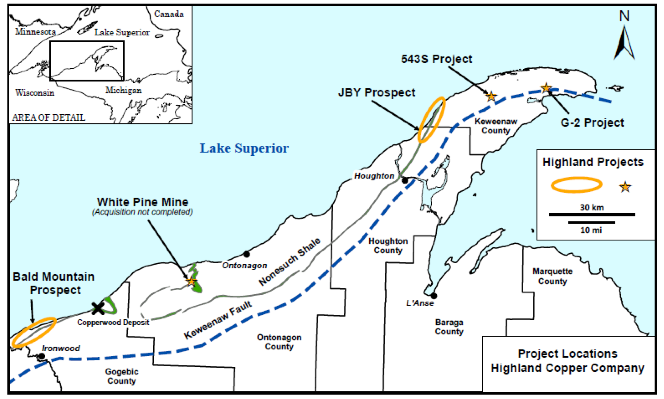MARQUETTE, MICHIGAN – Local property owners are expressing alarm over mineral lease requests made by UPX Minerals, a wholly owned subsidiary of Highland Copper. UPX is seeking to lease nearly 4,000 acres of State-owned minerals in Iron and Marquette Counties. Most of these mineral properties are in Marquette County, and many are underneath private property, homes, camps, rivers and streams, lakes, wetlands – even nature reserves.
“We opened our mail and found a notice from UPX Minerals requesting a direct metallic minerals lease from the Department of Natural Resources — under our own home. We were horrified! The owner of mineral rights can access your property, conduct exploration or drilling, or potentially develop a mine under your home or camp, and as the landowner you have very little control over that. Doesn’t that seem outrageous?” asked Sue Beckstrom Noel, a concerned local resident.
CONCERNED? SIGN THIS PETITION ASKING MICHIGAN DNR TO DENY THE UPX MINERAL LEASE REQUESTS!
More than 3,800 acres of the requested mineral leases would be located in Champion, Michigamme, Negaunee, Ishpeming and Marquette townships, and include sensitive and scenic areas. Some mineral lease requests could impact the Noquemanon Trail Network in the Forestville Trailhead area, Echo Lake Nature Preserve, Teal Lake, and the Vielmetti-Peters Conservation Reserve, owned by the Upper Peninsula Land Conservancy.
The UPX mineral lease request also targets the Rocking Chair Lakes – considered by the DNR to be one of Marquette County’s wild gems, and recently nominated to become “The Rocking Chair Lakes Ecological Reference Area.” This remote area of state land includes four different Ecological Reference Areas (ERA’s): Northern Shrub Thicket, Dry Mesic Northern Forest, Mesic Northern Forest, and Granite Cliff. The rugged terrain of the Mulligan Escarpment is also the heart of Michigan’s moose range.
In 2017, UPX Minerals acquired nearly 500,000 acres of mineral properties in the Central Upper Peninsula of Michigan – lands formerly owned by Rio Tinto and Kennecott. UPX is reviewing historic mineral exploration data, and conducting “field exploration” in search of orogenic gold, magmatic nickel-copper and zinc-copper deposits in the various properties. Their goal is to “define drilling targets” this year, creating a “pipeline” of future mining projects. Highland Copper is currently developing projects in Gogebic and Ontonagon counties, and in the Keweenaw Peninsula. They own the Copperwood Project, where they propose to mine adjacent to the Porcupine Mountains Wilderness State Park, and potentially underneath the park itself.
“We built our family home on Neejee Road in 1992 primarily because we loved the natural beauty of the wooded lands near the McClure Basin. Other people appreciate the scenic beauty of the region also, because the old steel bridge and the new high bridge on Co. Rd. 510 over the Dead River are two of the most photographed areas in Marquette County. Imagine having a mine in the background of your next bridge photo! It is shocking to consider. This would also impact the Noquemanon Ski Trail, the Hoist and McClure Basins, and the nearby Ore to Shore bike race,” said Julie Hintsala, a local landowner.
When asked why the company wanted to conduct mining exploration in residential areas, a UPX representative contacted by phone replied: “We’re just trying to tie areas together that we already have rights to.”
“I am a life-long Yooper and I do appreciate the historical and current importance of mining to our area. However, we are much more than mining now. Tourism, mountain biking and cross country skiing in this area would be devastated by possible mining operations. Is it worth forever changing our landscape and risking our environment including the nearby Dead River basin for a short term mining operation? Why would the State of Michigan consider allowing mineral rights to be leased for exploration so near a community in Negaunee township in an area that will impact recreation and tourism?” asked Hintsala.
“After many years living in Chicago and then nearby Indiana, my wife and relocated last year to the UP because we fell in love with the abundance here of clean air, fresh water bodies and unspoiled natural beauty of mountains and woods, and all the opportunity for outdoor recreation and enjoyment offered by this beautiful environment. However, we now face a grave threat to that environment because UPX, Inc., subsidiary of Canadian conglomerate, Highland Copper, has targeted Marquette County for exploration and potential development of sulfide ore mining, a form of extraction that may leave the air, streams and groundwater polluted with toxic by-products. To pursue their destructive plans, UPX has requested that our Michigan DNR grant it ‘direct mineral leases’ over areas which DNR now holds in trust for the benefit of all Michigan residents. We ask our fellow citizens to join us in urging DNR to reject this corporate poaching of our environment by submitting comments before the public comment period expires,” said Dennis and Kim Ferraro of Marquette.
“Granting the mineral lease rights allowing exploration could lead to a possible mishap such as what occurred in the Porcupine Mountains wilderness area. Degradation at that exploration site could have been prevented had there been proper oversight and inspection by the DNR and DEQ,” said Richard Sloat, a resident of Iron County.
Approximately 119 acres of the lease requests are located in the Crystal Falls Township of Iron County, adjacent to the East Branch of the Fence River, and underneath Wilson Creek and wetlands.
“Iron County communities and watersheds continue to feel the impacts of the iron ore mines that have been closed for more than 40 years. The parcels identified for mineral exploration, and potential mining in Iron County, are remote, water-rich sites. It is in our best interest to protect our watersheds from wide-scale ecological disruption, and look instead toward a future that allows our local economies to thrive because of the natural beauty that attracts people to our area,” said Maggie Scheffer, a board member of the Upper Peninsula Environmental Coalition who resides in Iron County.
“If Highland Copper / UPX succeeds in taking even a fraction of these sulfide-mineral deposits from exploration to development, the risk to the Lake Superior watershed will be significantly heightened,” warned Louis Galdieri, a writer and filmmaker interested in the history and long-term prosperity of the Lake Superior basin.
After hearing from concerned citizens, the Mining Action Group, Upper Peninsula Environmental Coalition, Superior Watershed Partnership and others requested an extension of the public comment period (originally set to expire in early May):
IMPORTANT UPDATE – DNR’s OFFICE OF MINERALS MANAGEMENT
“This is to notify you that we are extending the public comment period for this lease request to June 11, 2018 to allow members of the public additional time to review the request.”
The public is urged to submit written comments expressing their concerns and providing additional information “relative to the request to lease the specified mineral rights” by June 11, 2018 to DNR, Office of Minerals Management, P.O. Box 30452, Lansing MI 48909, or DNR-Minerals@michigan.gov
CONCERNED CITIZENS MEETING
The next meeting of landowners to discuss the UPX mineral lease requests will take place in Marquette on Thursday April 26th, from 5-7 pm. Contact miningactiongroupUPEC@gmail.
LEARN MORE
Michigan DNR: UPX Mineral Lease Request: Parcel List and Maps
https://www.michigan.gov/
Michigan DNR: Rocking Chair Lakes
http://www.midnr.com/

